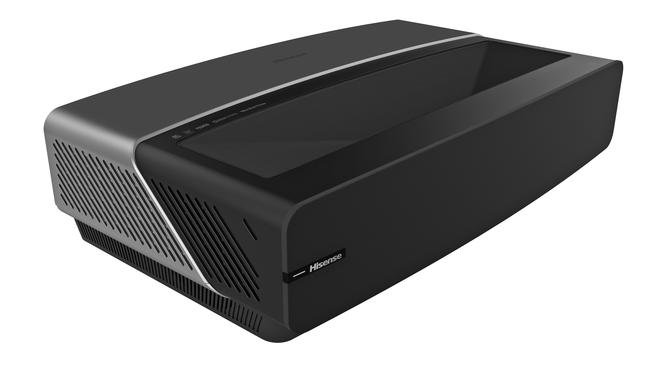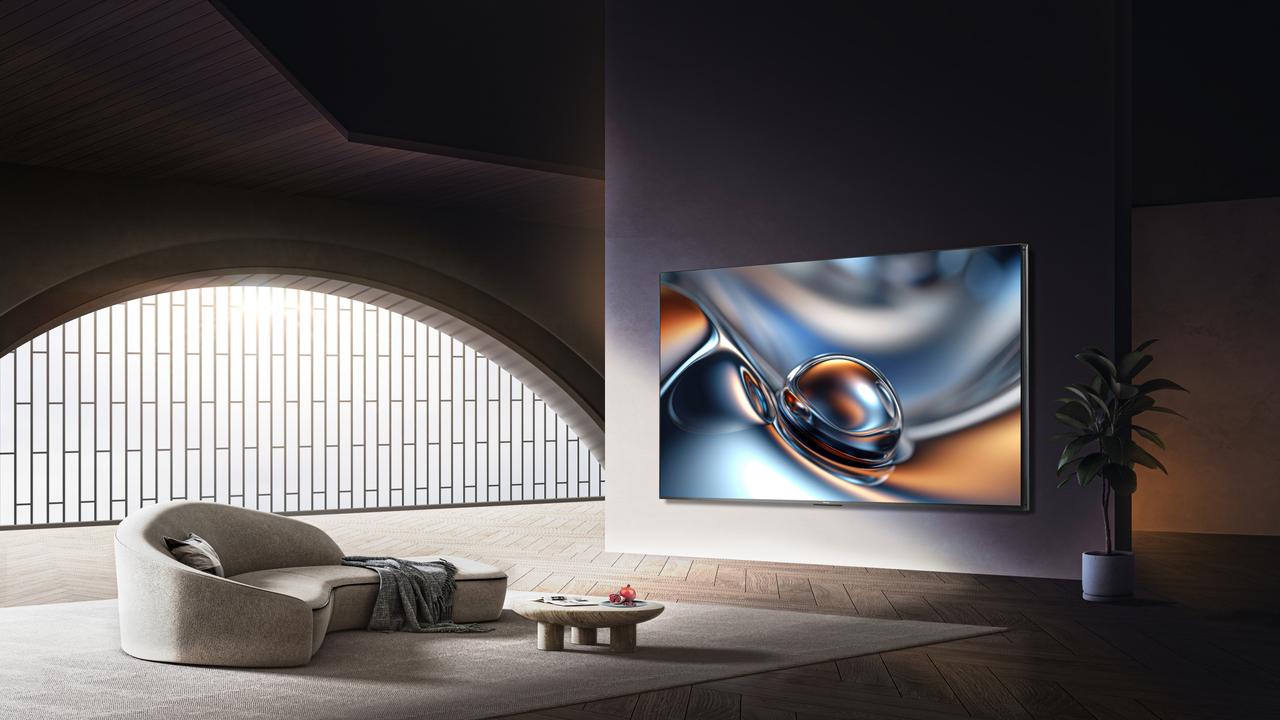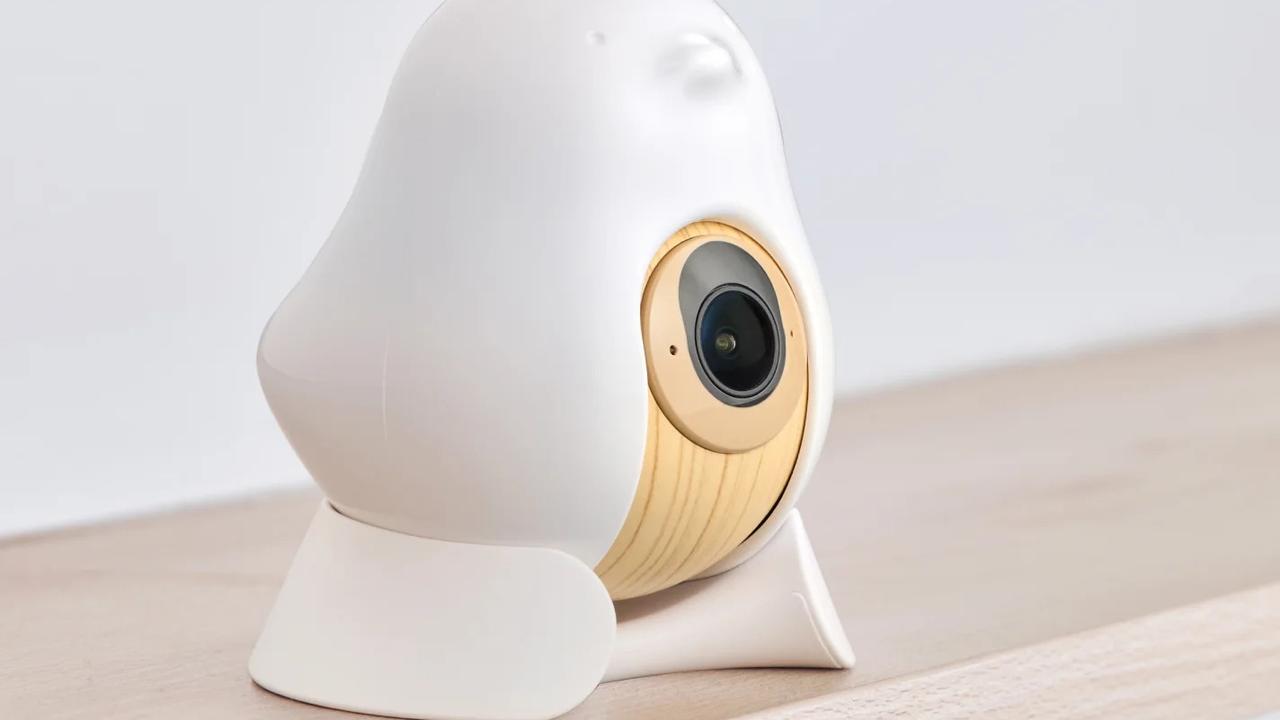Hisense slashes the price of its 100L5F 100-inch 4K Laser TV
TV maker Hisense has slashed its 100-inch 4K Laser TV price by almost two thirds, making it far more affordable.
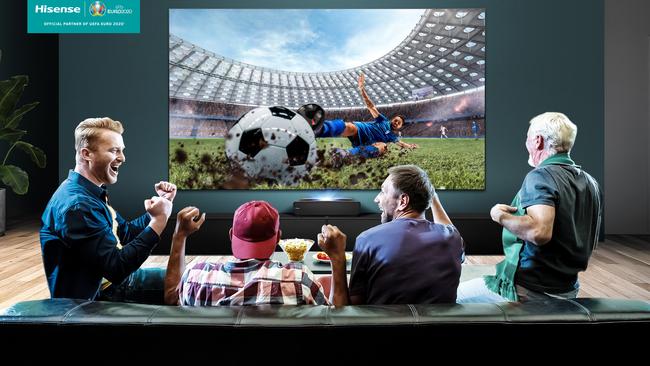
TV maker Hisense has slashed the price of its 100-inch 4K Laser TV by almost two thirds, making it far more affordable. There are also upgrades to its operation. That’s enough for us to take a second look at what is an emerging form of big TV sets in the market.
These TVs are not your regular set. Instead you get an ultra-short throw projector console complete with a TV tuner that you place below the screen 29 centimetres from the wall. You also get a big 100-inch screen to attach to the wall.
When I reviewed the 100-inch Laser last year, the retail price was $19,999. This revamped version, the 100L5F, is $6999. Hisense says the new system makes one important compromise. It uses a single rather than a dual laser.
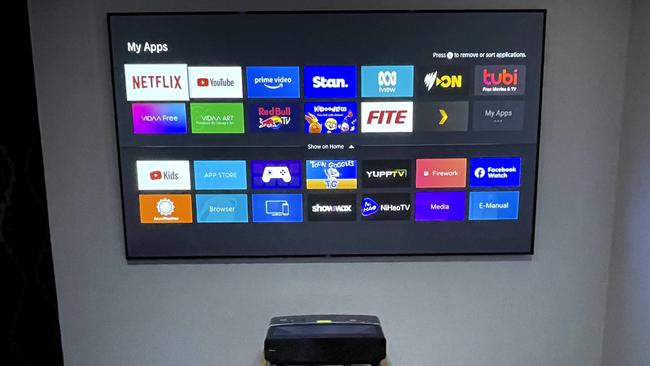
You can of course buy a regular 100-inch TV that doesn‘t use a laser configuration. I did a quick search of prices online and you typically pay north of $10,000.
A 4K TV/projector configuration isn’t going to be as crisp as a dedicated LED screen, but it gets darn close and the colour albeit a little oversaturated is strong.
The screen is big enough for many to regard this as a home theatre set-up.
There are benefits in the 100L5F beyond what Hisense offered a year ago with its original 100-inch laser.
First, you don’t need professional installation, a factor that added to the original cost. On the original unit, it wasn’t easy to ensure the image from the projector matched exactly the position and dimensions of the screen.
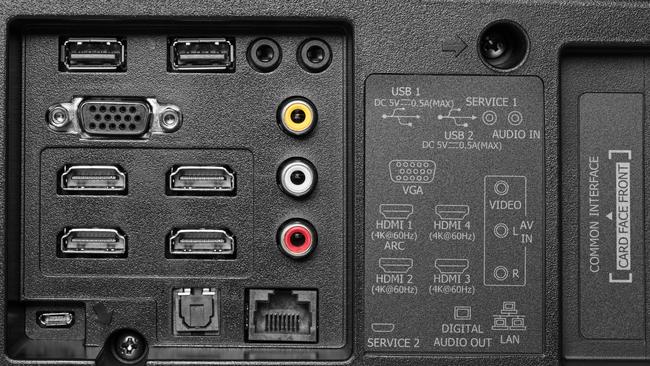
Hisense has changed this so you can do the installation yourself. You get out your phone, use a QR code, take a photo, and send that to the console which adjusts dimensions automatically.
Last year’s projector didn’t handle projecting onto a plain wall, whereas the new set does For example, during the summer, you might like to take the projector unit outside at night, and watch movies under the stars. You can do that without disturbing the screen inside, and project onto a white wall. There is a projector setting for this change.
Hisense says it has also improved the screen’s ability not to reflect light using a feature called ambient light rejection (ALR). My review unit was set-up in an internal room so I wasn’t in a position to test this. Last year’s 100-inch screen certainly did look washed out in a room with light streaming in after sunrise. It’s an important capability you need check. It’s best to choose a location without bright streaming light.
This year’s set brings another capability, light temperature adjustment, a common feature on phones that softens the light colour at night. The effect is noticeable. The 100-inch screen is also low blue light content certified which Hisense says makes it safe to view as close as three metres without the risk of eye strain.
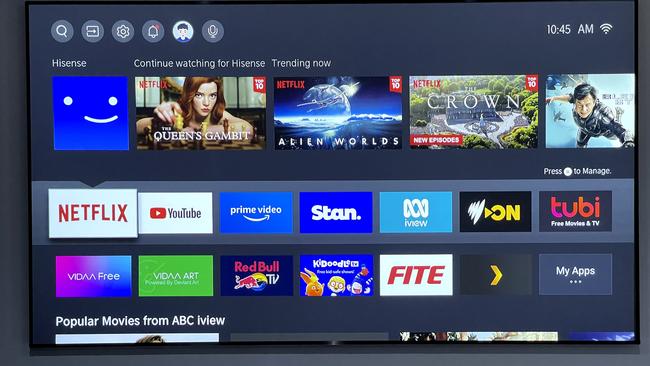
Another advantage of Laser TVs is that you don’t need to punch holes in the wall to thread cables to the rear of the set. Everything connects to the projector console below, including accessories such as games consoles and media players.
The console has 4 HDMI ports including one ARC port, 2 USB, RCA, composite video, digital sound, Ethernet, and 2 audio plugs for headsets and other plug-in devices.
You get many of the trappings of Hisense’s regular sets, such as version 4 of its VIDAA smart TV operating system, Dolby Atmos sound with front firing 30 watt speakers on the projector console (the sound is loud), HDR10 with HLG aka “hybrid log gamma”. It enables HDR for TV signals. There’s an X-fusion light source designed to improve the sharpness and clarity of images.
Hisense includes a slimline and intuitive remote that makes it easy to navigate the smart TV menu.
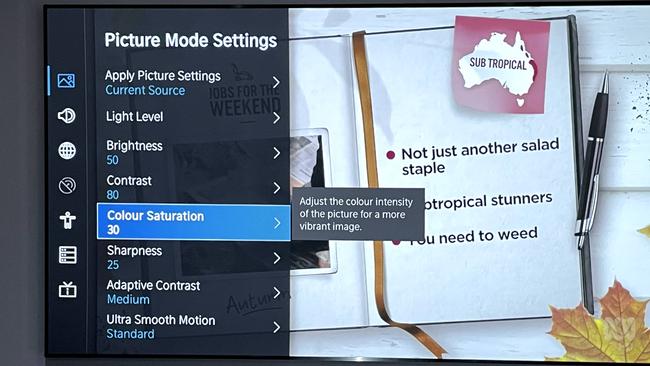
The VIDAA menu is intuitive. Popular content from some services such as Netflix and ABC iview appears in the row above these streaming apps. The TV set-up menu is easy to use. I played around with different display modes while trying out the set.
Hisense has been slow to offer some commonly used apps; that’s improving but still a work-in-progress. In Australia, you get ABC iview and SBS On Demand but you still rely on Freeview Plus for commercial TV catch-up content. Hisense this year announced Foxtel is coming to it’s TVs, but that’s yet to happen to these Laser TVs.
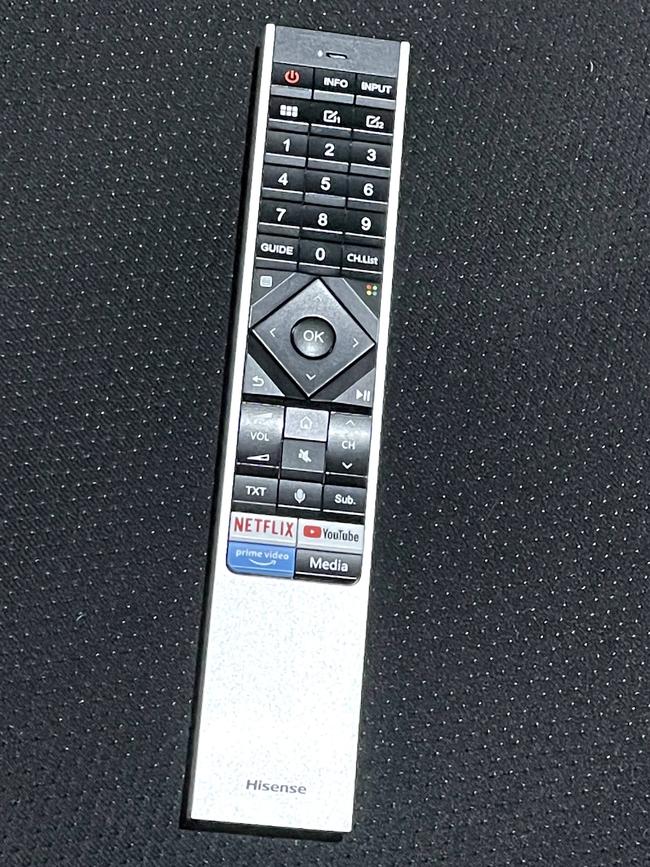
Amazon Alexa is integrated and I could control the TV and choose apps using my voice by pressing the speak button on the remote. Google Assistant works to a point, but you need to connect the TV to the same network as a Google Assistant device.
Search is useful, but not universal. I could search for movies by Nicole Kidman and a row of them would appear almost instantly, but they weren’t from the main streaming sources. The search function showed lots of content from Tubu TV which is available on Hisense.
Despite these issues, I was impressed with mark 2 of Hisense’s 100-inch laser TV and believe this style of TV will become increasingly popular, given the cost savings it offers for very large TVs, and the drop in price.
